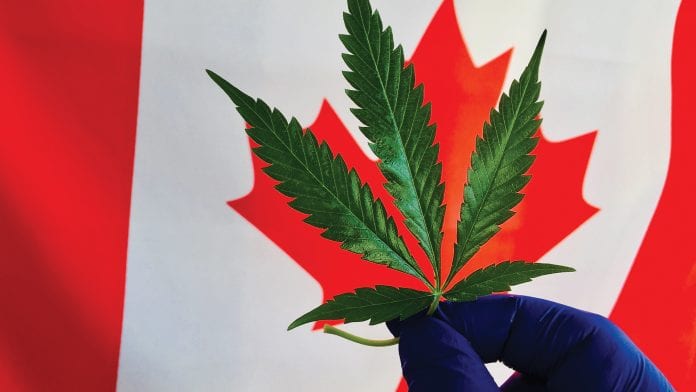You are here
Home 🌿 Medical Cannabis News 🌿 Safeguarding patient access to medical cannabis in Canada 🌿Safeguarding patient access to medical cannabis in Canada

On 17 October 2018 (‘Legalisation Day’) Canada became the world’s second – and largest – country to legalise recreational cannabis, 17 years after it first made medical cannabis legal. The historic move, which allows adults aged 18 and over to possess up to 30 grams of legal cannabis and grow up to four plants per residence, was greeted enthusiastically by many in the country but has nonetheless prompted concerns from some over patient access to cannabis-based medicines.
Health Europa asked James O’Hara, the president and CEO of non-profit organisation Canadians for Fair Access to Medical Marijuana (CFAMM), to tell us
more about the challenges surrounding medical cannabis and the implications of recreational legalisation.
The Canadian Medical Association has called for Canada’s medical cannabis system to be phased out – why does CFAMM oppose this?
CFAMM believes it is important to understand and recognise that there are key differences in the makeup, and ultimately the purpose of, medical versus non-medical cannabis, and this difference is related to the two main cannabinoids found in cannabis, THC and CBD. THC is the main cannabinoid associated with the high feeling, whereas CBD is non-intoxicating and is used predominantly in a medical application where the goal is to get well, not get high. While THC is certainly required in a medical context due to the synergistic effects of both THC and CBD, it typically comes in lower concentrations compared to non-medical cannabis.
Medical patients will often use oil forms of cannabis which have given ratios of CBD to THC, for example 1:1 where the amount of THC to CBD is approximately even, or products with ratios of 4:1, 5:1, 25:1, etc. In non-medical (recreational) use, much higher concentrations of THC are desired.
CFAMM believes that it is absolutely essential to continue with the medical system in order to ensure medically oriented products versus non-medical continue to be available to patients and in order to have a market where constant development of medical cannabis products takes place.
Many doctors are still reportedly reluctant to prescribe medical cannabis – why is this and how can this challenge be overcome?
This comes down to training. Doctors are reluctant primarily because they were never taught the human endocannabinoid system nor were they instructed on how to prescribe cannabis to patients, so they have nothing to go on. This will ultimately be overcome through delivering education to doctors in medical school and continuing education for existing doctors.
Now that cannabis has been legalised for recreational purposes, how do you expect this to impact on medical cannabis patients?
The fear is that with legalisation and no explicit guarantee of patients’ supply written into the regulations, patients will have challenges accessing their medicine, which is the case today.
How does CFAMM work to support access to medical cannabis for the patients who need it?
CFAMM conducts advocacy work at various levels of governments while working closely with the government agencies and departments to represent the needs of patients. We believe in a partnership approach wherever possible.
420 Intel is Your Source for Marijuana News
420 Intel Canada is your leading news source for the Canadian cannabis industry. Get the latest updates on Canadian cannabis stocks and developments on how Canada continues to be a major player in the worldwide recreational and medical cannabis industry.
420 Intel Canada is the Canadian Industry news outlet that will keep you updated on how these Canadian developments in recreational and medical marijuana will impact the country and the world. Our commitment is to bring you the most important cannabis news stories from across Canada every day of the week.
Marijuana industry news is a constant endeavor with new developments each day. For marijuana news across the True North, 420 Intel Canada promises to bring you quality, Canadian, cannabis industry news.
You can get 420 Intel news delivered directly to your inbox by signing up for our daily marijuana news, ensuring you’re always kept up to date on the ever-changing cannabis industry. To stay even better informed about marijuana legalization news follow us on Twitter, Facebook and LinkedIn.




